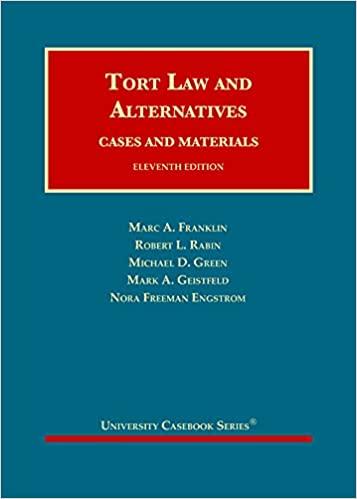Question
In the landamark 1965 case of Griswold v. Connecticut, the Supreme court examined a Connecticut statute that made it a crime for any person to
In the landamark 1965 case of Griswold v. Connecticut, the Supreme court examined a Connecticut statute that made it a crime for any person to use contraception. The majority declared the law an unconstitutional violation of the right to privacy. Justice Black dissented, saying "I do not to any extent whatever base my view that this Connecticut law is constitutional on a belief that the law is wise or that its policy is a good one. [It] is every bit as offensive to me as it is to the majority. [There is no criticism by the majority of this law] to which I cannot subscribeexcept their conclusion that the evil qualities they see in the law make in unconstitutional." What legal doctrines are involved here? Why did Justice Black distinguish between his personal views on the statute and the power of the court to overturn it?
Step by Step Solution
There are 3 Steps involved in it
Step: 1

Get Instant Access to Expert-Tailored Solutions
See step-by-step solutions with expert insights and AI powered tools for academic success
Step: 2

Step: 3

Ace Your Homework with AI
Get the answers you need in no time with our AI-driven, step-by-step assistance
Get Started


